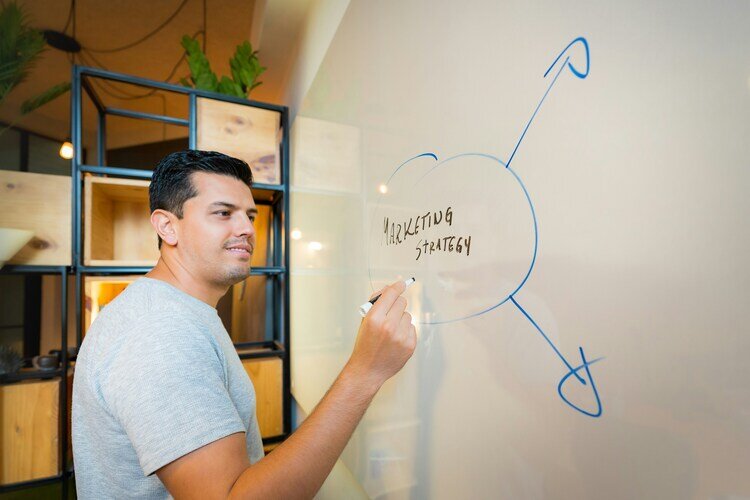3 Steps to More Customer-Centric Marketing
by Relay42 on 20.1.2021

We all want our marketing to be more customer-centric. Of course we'd love every message to be personalized. Of course we'd love to offer the perfect journey that ticks all the boxes and leads to rave reviews and forever loyalty.
It's not difficult to theorize about it, but putting it together and making it work in practice — for hundreds of thousands or even millions of individuals — well, it's complicated. So this eBook is all about how to start small, deliver quick results, and scale your customer journeys. In other words — it's a practical, approachable method.
- Why go customer-centric?
- 3 ingredients to customer-centric success
- How to create a team of explorers and align customer-centric KPIs
- Start small for fast results
- Scale for success
Why go customer-centric?
Traditional organizations across the globe are transforming to compete against digital-only players and restructuring to put the customer first. The world’s buying behavior — and consumer behavior in relation to technology — is quickly changing with the rise of online distribution channels, smart devices, and their interplay with offline touchpoints. Siloed business systems and their old reporting lines need to shift and synchronize — fast.
Terms like "omnichannel" and "customer-centricity" have been buzzing around long enough now that you would think these practices would be second nature for businesses. Yet 87% of customers still think brands need to put more effort into providing a consistent experience.
Why are businesses hesitating? In our experience, there two common myths holding marketing teams back:
- With so many marketing technologies, an overflow of customer data, and an ever-growing number of touch points, we have to start from scratch if we really want to unify them all.
- We use tag management to follow customers and connect our web and email channels, so we're already customer-centric.
Setting up for customer-centricity is a journey in and of itself, but we believe the best approach is to start by creating incremental, valuable interaction sequences, rather than start from scratch.
And it’s about maintaining a vision for the future that you can build upon — one that goes far beyond the limits of a few customer channels, and into the territory of trying new technology as it becomes available.
3 Ingredients to customer-centric success
In this guide, we’re covering three crucial ingredients that will help you align your customer-centric goals within your organization and start tailoring your customer journey across all of your channels.
- Create a customer-centric team and KPIs: begin with a test-and-learn team culture an ambition to strengthen your position in your industry by doing things differently. Read more about overhauling 3 specific KPIs to be more customer-centric here.
- Start small for fast results: the right technology will help you connect your customer journeys bit by bit to deliver initial impressive results within months, and begin creating company-wide buy-in.
- Scale for success: once the quick wins are out of the way, you can get started on forging the path to organizational maturity. The key here is showing you can deliver on smaller goals while setting your customer journeys up for ongoing success.
Create a team of explorers and align customer-centric KPIs
Great things in a big company often start with a small, hands-on, cross-disciplinary team that's ready to learn, accelerate and improve fast. From there, you can work with technology to prove value in your new, agile marketing approach. It takes curiosity to understand and map customer movements, plus a technology solution to deliver on their individual preferences across their landscape.
How to build and scale stakeholder buy-in for your approach
Start with a simple set of KPIs you can continue to achieve, and build on. This is how you can begin to create buy-in across your marketing team — and your entire company.
"We didn’t want to wait to start testing, learning, and improving what we were doing. There’s a lot of talk about big data, but what we really found valuable was the ability to start leveraging what we had; and even by securely cross-pollinating customer data between our core channels like CRM, website, and display, we could become explorers of whole new territories within the world of marketing."
Robert Vonk
Manager Online Marketing & Data, Mazda
Learn more about our work with Mazda here
Start small for fast results
Make bigger business objectives into manageable micro-journeys
Being completely customer-centric straight away may sound like a lot to take on — and it is. But by translating specialist knowledge into practical reality, your team of explorers can dive into a single simple hypothesis by using technology to deliver incremental business value and serve your valuable customers relevant content. Then you'll be ready to move towards your bigger goal of complete customer-centricity.
- Map a simple channel mix by balancing customer experience and business benefit, such as ‘create cross-channel decisioning to differentiate between customer and prospect.’
- Create a benchmark for your experiment by using a control group and KPIs, such as ‘reduce budget waste on display by half.
- Cultivate a test-and-learn culture by continuously sharing your successes, building on them, and adding incremental layers of complexity and value with the platform. This could be adding more channels or touchpoints to your scenario, or scaling your success in a different way by increasing audience or customer segment size.
Scale for success
Guide your organization towards full maturity by scaling your most effective customer interactions
It pays off to have always-on experiments that tackle customer journeys in smaller pieces. Besides getting results, this strategy nurtures your team’s innovative mindset and keeps them focused on evolving their experiments. But what about the bigger picture?
By working to identify steps towards maturity month by month, along with the broader factors you need to consider within those steps, you can take your journey orchestration project to the next level and deliver a long-term plan for your organization as a whole.
This goes all the way from starting as an explorer — starting simple by using your agile platform to follow existing data trails and unpacking straightforward hypotheses, to becoming change-makers who define the strategy that will help you to become — and remain — a brand your customers love.
And it reaches all the way through to cross-organizational collaboration, to shape an entire business that's driven by the everyday journeys of your customers. All it takes is a holistic approach that combines marketing, customer service, data, and technology.
You May Also Like
These Related Stories

Infographic - 3 Steps to Omnichannel Customer Journeys

Customer Data Platform Implementations: Best Practices and Pitfalls



.png?width=786&height=265&name=Relay42%20Demo%20Banner%20(1).png)